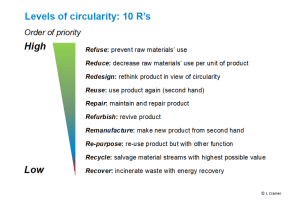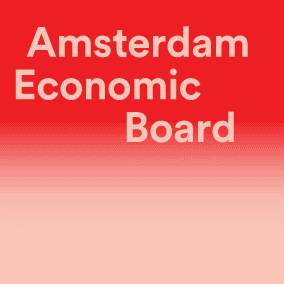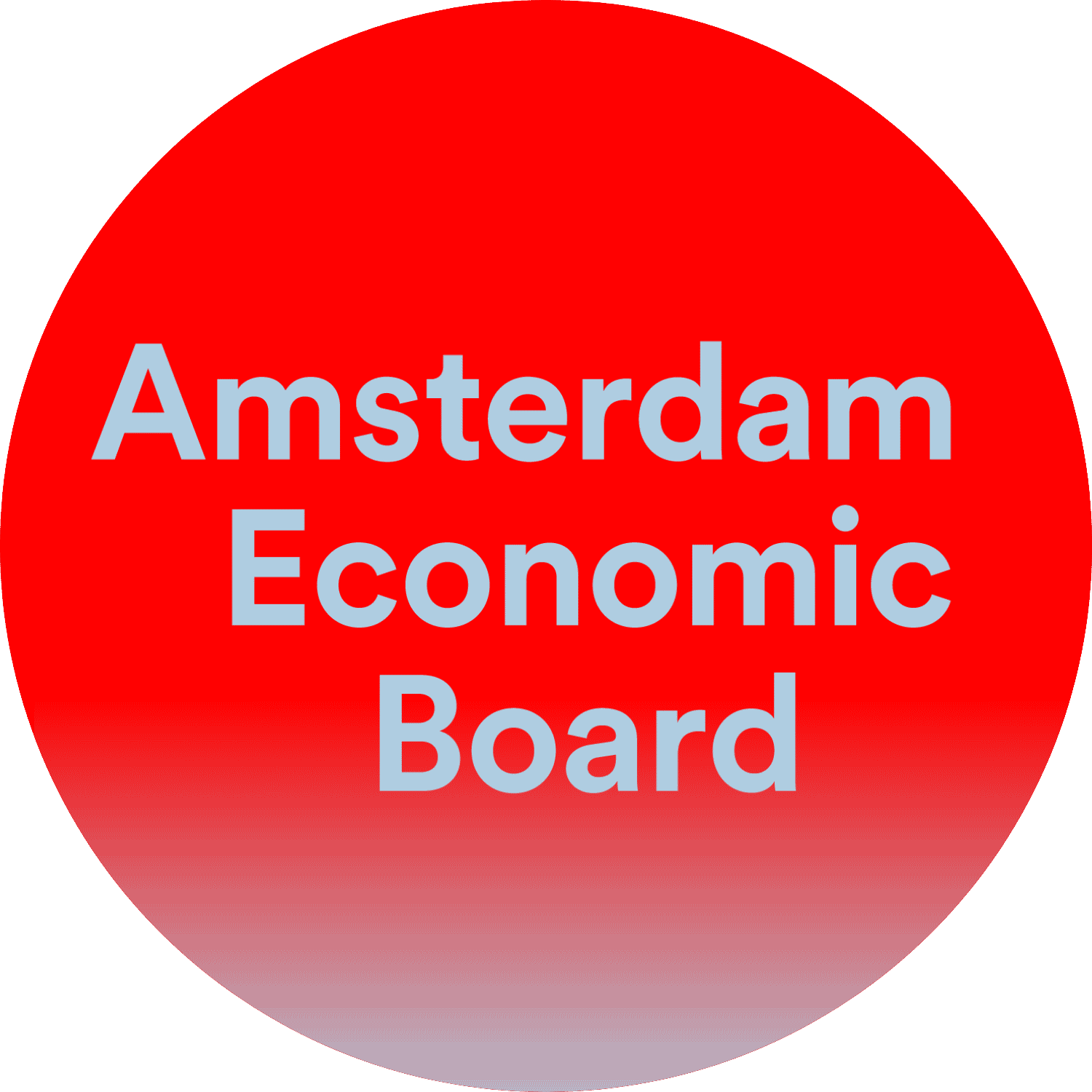The market doesn’t organise itself according to your needs
To make real strides toward a waste-free world, a large group of companies must change their products and production processes and start working together in new ways. Says Jacqueline Cramer, previously a member of our Board, former minister and professor of sustainable innovation.
Leather bags from mangoes, sustainable paint from flax, ink from coffee grounds and compostable packaging from beer waste. These are ambitious ideas from circular startups looking to make a difference. But for a truly circular economy, you need more than a good invention. With the Amsterdam Economic Board, Cramer shows what such a system innovation could look like.
On average, a child wears 4.5 nappies per day for about 3 years. In the Amsterdam are alone, that translates to 142 million baby nappies a year. Every year, 57.1 million kilos of diapers and incontinence materials are discarded in the Amsterdam Metropolitan Area. Only 1% of this is collected and composted separately. A waste, because that material is suitable for reuse. For example, you can recover plastics from diapers to produce bottle caps for cleaning products. And the moisture-absorbent material can be reused in new diapers.
Reason enough for Jacqueline Cramer to find out how diapers can be recycled on a larger scale for the Amsterdam Economic Board’s raw material transition programme. “I want to get diaper recycling to the point where you get all the parts of a nappy back as a kind of virgin material,” she said.
Innovative recycling options
Cramer found out she needn’t reach out to the well-established corporates. “In terms of sustainability, they quickly stuck to solutions like ‘burn more energy-efficiently’ or ‘reuse some plastic.’ You don’t usually get the best innovative recycling options from established companies. Because you become established by optimising your processes, not by radically renewing them.”
Startups could also do little to transform the nappy recycling market as Cramer had envisioned it. “We often think we can rely on startups for innovation. But most innovators, big or small, run into the same problem: the market doesn’t organise itself to meet your needs.”
Removing barriers
If you really want to achieve something and remove barriers, you have to change the system, Cramer and the Amsterdam Economic Board concluded. There were quite a few companies that wanted and also could recycle diapers, but it had to be profitable for them. That meant the volume had to be substantial enough so the machines wouldn’t run for nothing. So Cramer and we got in touch with major municipalities within the Amsterdam Metropolitan Area, worked with daycare centers, and in Amsterdam East, containers were set up for parents to separately dispose of their nappies. Thus ensuring a continuous flow of materials for recyclers.
Then, the quality standards for the reuse of diaper materials had to be set. A sales market had to be found for the end product of recycling: the recyclate. After all, you don’t want to recycle mountains of diapers into mountains of detergent caps and then be stuck with them. “You have to make sure the whole system moves with you,” Cramer explained. “That’s a lot of work. If a company has to do all that on their own, they often quit before they’ve even started.”
Structure firm in place
Moving the system is therefore not just up to companies, she believes. It is also up to the government. “The edifice of cooperating parties must stand before you can get started with the circular initiative. That requires something new from the government: preparing a system innovation. In the case of diaper recycling, that meant a guaranteed volume, municipalities and nurseries participating, and a guaranteed market. The Amsterdam Economic Board has therefore coordinated closely with municipalities, province and the company that wants to invest in diaper recycling: what will you do and what do we do. This is how we bring about this system change together.”
Fundamental shift
Preparing system innovations – that’s not a natural role for a government, Cramer knows. “The government does give innovation subsidies or loans, but they are only useful once you have organised the system. A circular economy only really takes off when the demand increases for circularly designed and produced products. That won’t happen at the push of a button. The transition requires a fundamental shift in our economic system. The government must adjust its procurement accordingly and start purchasing circularly. That is risky, because even with that, you have to be sure there is sufficient supply.”
One step up
 On top of that, not every form of circularity is equally sustainable. After all, it takes fewer resources to NOT use materials than to use them and then recycle. As early as her time as Minister of Housing, Spatial Planning and the Environment, Cramer therefore argued that more attention should be paid to the higher rungs on the circularity ladder.
On top of that, not every form of circularity is equally sustainable. After all, it takes fewer resources to NOT use materials than to use them and then recycle. As early as her time as Minister of Housing, Spatial Planning and the Environment, Cramer therefore argued that more attention should be paid to the higher rungs on the circularity ladder.
At that time, the Lansink Ladder was used: a waste hierarchy and standard on waste management, with the ‘steps’ being Landfill, Incineration, Sorting and Recycling, Reuse, and Prevention. But policy usually didn’t progress past the recycling level. Cramer therefore devised the 10R ladder, where recycling is placed on the second tier. Followed by eight even more sustainable options.
It is no wonder, that in the case of the Amsterdam diapers, recycling was only one of the measures. An important part of the project was to encourage the use of washable diapers. Parents were given a free opportunity to try out washable nappies at no cost to reduce the diaper waste stream and carbon footprint of disposable nappies.
In Amsterdam, the structure is now in place, says Cramer: “Preparations are being made to build a diaper recycling plant. First some financial bumps have to be overcome. But then the way will be cleared for production.”
31 July 2020
Read more about
Contact us
Want to keep up to date?
Get the best regional news and events (in Dutch) via the Board Update newsletter
Share this news
Want to keep informed?
Follow us daily on LinkedIn and sign up for the Board Update newsletter.
Read more
- On 14 and 15 October, board members of the Amsterdam Economic Board convened for ...
- Focusing more on women in health care innovation and research will have ...
- What is the Amsterdam Metropolitan Area’s position on critical raw materials? ...

